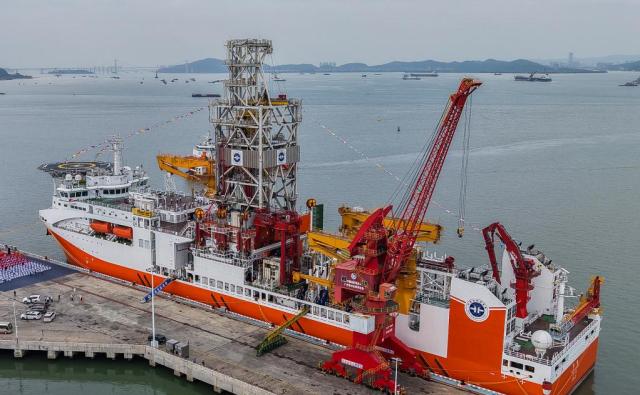The Meng Xiang, China's largest scientific research ship, measures 179.8 meters long and 32.8 meters wide, with a displacement of 42,600 tons. It has a range of 15,000 nautical miles, operates independently for 120 days, and can house 180 crew members.
"The core samples obtained will offer global scientists valuable insights into plate tectonics, oceanic crust evolution, ancient marine climates, and the origins of life," said Xu Zhenqiang, director of the Guangzhou Marine Geological Survey under the China Geological Survey. "It will enhance our understanding and management of ocean resources."
The Meng Xiang combines multiple functions, including deep-sea scientific drilling, oil and gas exploration, and natural gas hydrate exploration and testing. Following two sea trials, its performance exceeded initial design goals, chief designer of the vessel Zhang Haibin said.
It features the world's first hydraulic lifting rig capable of handling both oil and gas exploration as well as core sampling, with a lifting capacity of 907 tons. The vessel can perform four drilling modes and three coring methods, catering to a wide range of operational needs.
Equipped with nine specialized laboratories focusing on geology, geochemistry, microbiology, ocean sciences, and drilling technologies, it also has an automated core sample storage system that supports marine research.
Built to withstand extreme conditions, such as super typhoons, the vessel is designed for unrestricted global missions.
Until now, human activities and scientific exploration have mainly been confined to the Earth's crust, which averages 15 kilometers thick. Beneath it lies the mantle, a vital layer connecting the crust to the planet's core.
The commissioning of the Meng Xiang represents a critical step toward reaching or potentially breaking through the boundary between the crust and mantle, known as the Mohorovicic discontinuity, or Moho.
Copyright ⓒ Aju Press All rights reserved.




